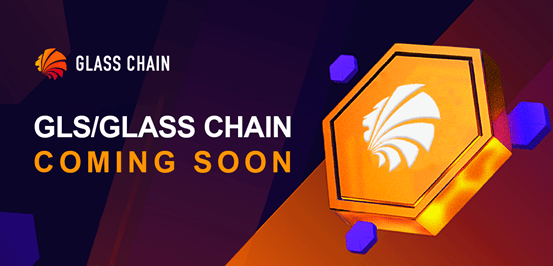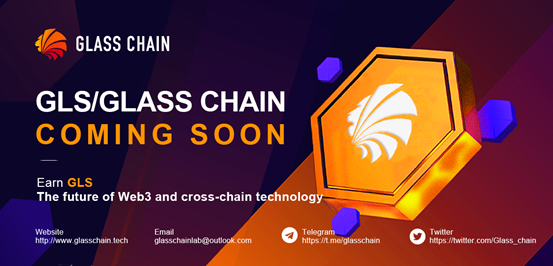Reason to trust

How Our News is Made
Strict editorial policy that focuses on accuracy, relevance, and impartiality
Ad discliamer
Morbi pretium leo et nisl aliquam mollis. Quisque arcu lorem, ultricies quis pellentesque nec, ullamcorper eu odio.
After years of research and development, the blockchain has finally entered a multi-chain market structure. There are more than 100 active public chains, many of which have their own unique applications, users, security models, design trade-offs, and smart contract mechanisms. The blockchain public chain system seems to be developing more and more. However, the reality is, the universe tends to entropy, as the number of similar public chains continues to increase, things will develop into a more chaotic state.
At this time, how to achieve interoperability under different networks is particularly important. How to use “external forces” to achieve orderly interoperability in the blockchain universe has increasingly become the focus of developers’ attention.
Polkadot’s slot auction has garnered a lot of attention recently. Polkadot advocates centralization and designed a two-layer structure of Relaychain + Parachain. In other words, the block verification of the parachain ecology will be provided by Polkadot’s center Relaychain. Parachains can be divided into isomorphic chains and heterogeneous chains. Isomorphic parachains can directly interact with each other. Although heterogeneous parachains follow different block generation logic, they can be accessed through a bridge structure, and then through the relaychain to achieve interaction with other parachains. In theory, in the future, any two parachains can go directly or through the Relaychain to complete cross-chain interactions. But this also brings greater uncertainty to Polkadot. The entire Polkadot ecosystem will place all bets on the Relaychain.
The cross-chain technology has developed rapidly in the past few years, and it has derived including Notary schemes, Sidechains/relays, Hash-locking, and distributed private key control, etc. Although there are many options for cross-chain technology solutions, the industry is also continuing to explore the integration of multiple technologies or new cross-chain technologies. In terms of technical architecture, Cosmos, Polkadot, and Glass Chain basically conform to the cross-chain solution of Relaychain/Parachain, but there are big differences in each of those design philosophies and security concepts.
Although Glass Chain has just appeared to the world by providing cross-chain solutions, the actual development time has taken as long as 54 months. Glass Chain independently researches and develops the public chain + parachain architecture. The public chain and the parachain have a clear division of labor. The public chain only performs verification, consensus,and storage; and runs the most basic contracts to maximize the stability of the public chain to protect the entire block network’s stability and security.

The public chain of Glass Chain is parallel with multiple parachains. Parachains have their own independent data networks, which do not affect each other and are interoperable. Each parachain can expand its functions, and different parachains can run their own data, execute actual transactions, run complex smart contracts, and more. For instance, multiple parallel chains can coexist, and connect to the public chain node through a unique grpc interface, which perfectly achieves the parallel execution of transactions.
This design greatly breaks through the shortcomings of blockchain technology that cannot support the physical industry. This is also the first real application of blockchain using parachain technology to achieve independently running useful internet data in blockchain.
Glass Chain adopts a modular plug-in underlying development framework, and extension functions are added in plug-ins. The extensible and pluggable modular design makes the entire network more efficient, that is, the blockchain world intercommunicates between networks but not interfering with each other through the Glass Chain’s cross-chain technology and pluggable modular design. Glass Chain perfectly integrates isomorphic and heterogeneous parachains, and the system is compatible with a variety of consensus mechanisms and a variety of mainstream consensus, it greatly surpasses Polkadot in terms of scalability and stability. And Glass Chain has no restrictions on parachains. The slot is open to all developers. As long as they participate in the ecology, everyone can get a parachain that suits their own business ecosystem.
In contrast, due to the use of bridges, Polkadot can only be compatible with about 100 parachains at most, which is not enough to support the long-term development of the ecology. For the project party, Polkadot is only open to rent a limited number of slots through bidding to access the parachain. Since the early system optimization work has not been completed, the network load capacity needs to be improved, and the number of slots that will be opened at the initial stage is expected to be limited. Polkadot’s slots are only rented, not for sale. The auction can bid for four lease periods, and each lease period lasts for 6 months, which is a maximum of two years. After two years, Polkadot’s application will be forced to relocate.
Glass Chain is the world’s first truly compatible commercial public chain, and it has taken the most important step in the commercial exploration of blockchain technology. At the same time, advanced cross-chain technology allows Glass Chain to seamlessly connect and integrate between any ecosystem, and become a true blockchain business empire.
Twitter: https://twitter.com/Glass_chain
Telegram: https://t.me/glasschain
Email: glasschainlab@outlook.com
Website: http://www.glasschain.tech



























